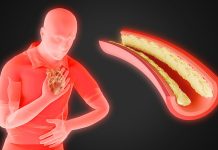
Heart attacks, medically known as myocardial infarctions, are serious health events that occur when the flow of blood to the heart is severely reduced or blocked.
This can cause damage to the heart muscle, and understanding the types, symptoms, and treatments is crucial for everyone. Let’s navigate through this important topic with clarity and simplicity.
At its core, a heart attack is a cry for help from your heart, indicating that it’s not getting enough oxygen-rich blood.
This condition can be due to various reasons, leading to different types of heart attacks, each with its own set of challenges and treatment approaches.
The most common type is called a “STEMI” (ST-elevation myocardial infarction), which occurs when one of the heart’s major arteries is completely blocked. This type of heart attack is considered more severe and requires immediate medical attention.
The “NSTEMI” (non-ST elevation myocardial infarction) is another type, involving partial blockage of the heart’s artery, which, while less severe than STEMI, still demands urgent care.
A lesser-known type is called “silent myocardial infarction,” or a silent heart attack. This occurs when blood flow to the heart is temporarily reduced, causing damage to the heart muscle without the classic symptoms of a heart attack.
It’s called “silent” because many people don’t realize they’ve had one, attributing any mild symptoms to other, less critical issues.
Symptoms of a heart attack can vary, but there are common signals that should not be ignored. Chest pain or discomfort, which might feel like pressure, squeezing, fullness, or pain in the center of the chest, is a classic sign.
Other symptoms include shortness of breath, nausea, light-headedness, or discomfort in other areas of the upper body, such as the arms, back, neck, jaw, or stomach.
Silent heart attacks might not present such clear symptoms but can still manifest through fatigue, flu-like symptoms, or general malaise.
Treatment for heart attacks depends on the type and severity but generally involves restoring blood flow to the heart as quickly as possible.
For a STEMI, treatment options include medications like thrombolytics (which dissolve blood clots) and procedures such as angioplasty (where a balloon is used to open blocked arteries) or bypass surgery (creating a new route for blood to go around a blocked artery).
NSTEMI treatments also focus on restoring blood flow but might be less immediate, involving medication and careful monitoring before deciding on procedures like angioplasty.
Understanding the risks associated with heart attacks is crucial for prevention. Factors include smoking, high blood pressure, high cholesterol, diabetes, obesity, poor diet, lack of physical activity, and excessive alcohol consumption.
Managing these risk factors through lifestyle changes and medications can significantly reduce the chances of experiencing a heart attack.
In conclusion, heart attacks are a major health concern worldwide, but with the right knowledge and actions, their impact can be significantly reduced.
Recognizing the symptoms and understanding the treatment options available are vital steps in responding effectively to heart attacks. Equally important is addressing the risk factors through healthy lifestyle choices, regular check-ups, and open communication with healthcare professionals.
By taking these steps, individuals can protect their heart health and reduce the likelihood of experiencing this life-threatening condition. Awareness and proactive management are the keys to a healthier heart and a longer, happier life.
If you care about heart health, please read studies about how eating eggs can help reduce heart disease risk, and herbal supplements could harm your heart rhythm.
For more information about health, please see recent studies that olive oil may help you live longer, and vitamin D could help lower the risk of autoimmune diseases.
Copyright © 2024 Knowridge Science Report. All rights reserved.



